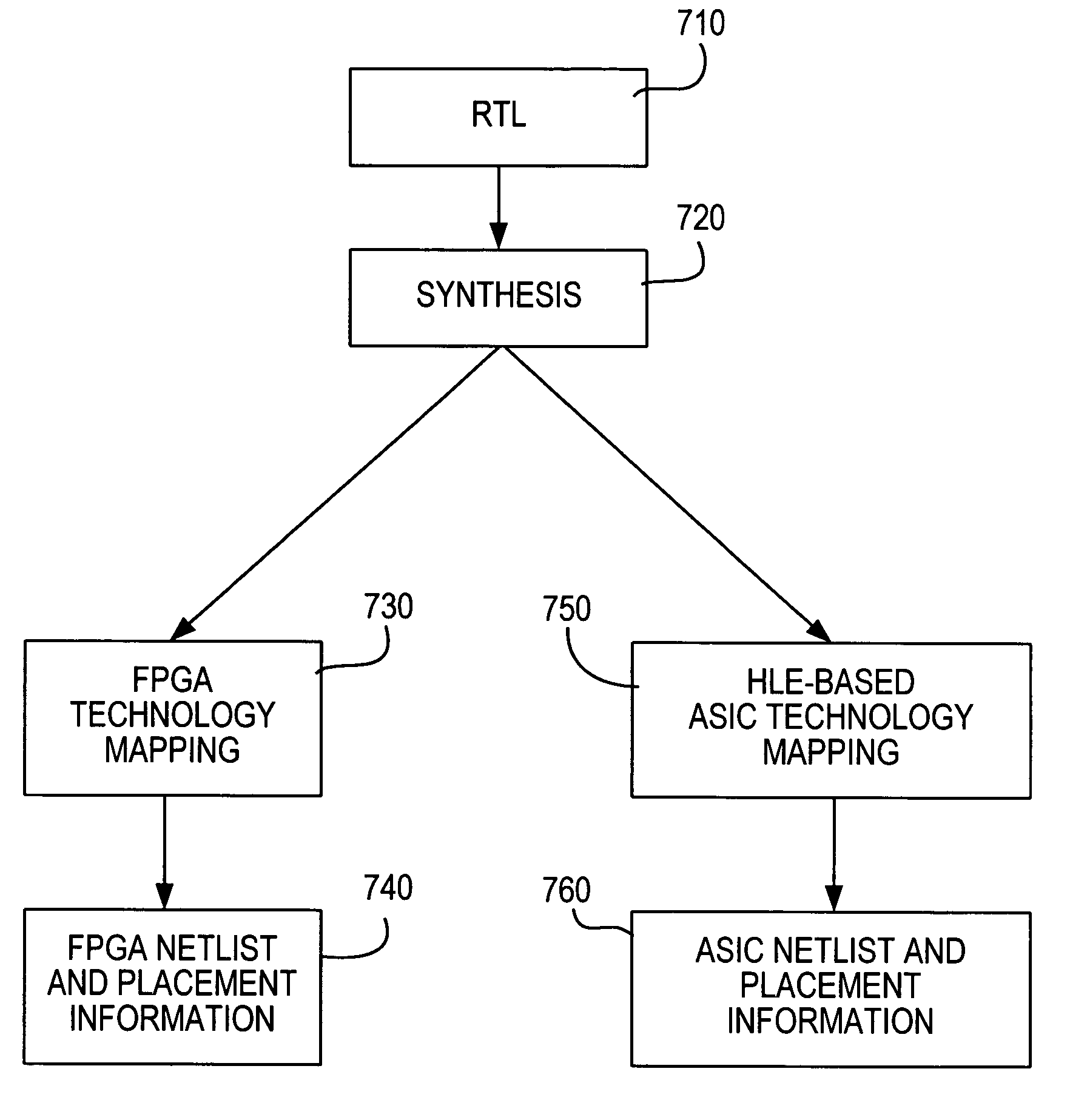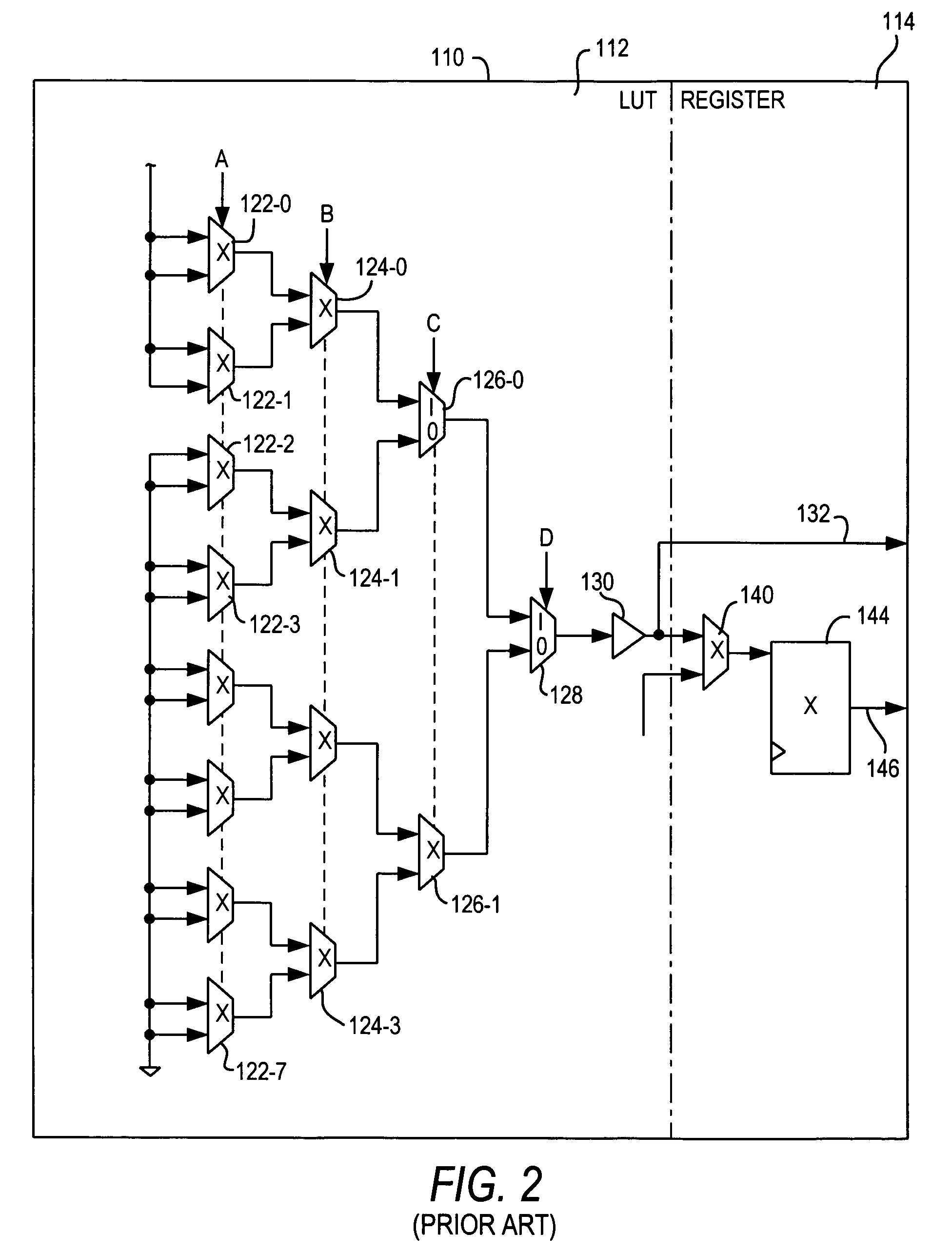Application-specific integrated circuit equivalents of programmable logic and associated methods
a technology of integrated circuits and programmable logic, applied in the direction of computation using denominational number representation, pulse technique, instruments, etc., can solve the problems of ineffective waste of substantial amounts of circuitry in less-than-fully-used les, complex and/or extensive logic or logic-type operations, etc., to facilitate the conversion of an fpga design and save time and cost.
- Summary
- Abstract
- Description
- Claims
- Application Information
AI Technical Summary
Benefits of technology
Problems solved by technology
Method used
Image
Examples
Embodiment Construction
[0025]An illustrative, known, FPGA LE 10 is shown in FIG. 1. LE 10 includes a 4-LUT portion 12 and a register portion 14. 4-LUT portion 12 includes 16 programmable memory (e.g., RAM) cells 20-0 through 20-15. The outputs of RAM cells 20 are applied, in respective pairs, to the inputs of eight two-input multiplexers (“muxes”) 22-0 through 22-7. 4-LUT input A controls which of its inputs (from RAM cells 20) each of muxes 22 selects to be its output. For example, if input A is logic 1, each of muxes 22 selects its upper input to be its output. If input A is logic 0, each of muxes 22 selects its lower input to be its output. The outputs of muxes 22 are applied, in respective pairs, to the inputs of four two-input muxes 24. 4-LUT input B controls which of its inputs each of muxes 24 selects as its output. Again, if B is logic 1, muxes 24 select their upper inputs to output. If B is logic 0, muxes 24 select their lower inputs to output. The outputs of muxes 24 are applied, in respective p...
PUM
 Login to View More
Login to View More Abstract
Description
Claims
Application Information
 Login to View More
Login to View More - R&D
- Intellectual Property
- Life Sciences
- Materials
- Tech Scout
- Unparalleled Data Quality
- Higher Quality Content
- 60% Fewer Hallucinations
Browse by: Latest US Patents, China's latest patents, Technical Efficacy Thesaurus, Application Domain, Technology Topic, Popular Technical Reports.
© 2025 PatSnap. All rights reserved.Legal|Privacy policy|Modern Slavery Act Transparency Statement|Sitemap|About US| Contact US: help@patsnap.com



